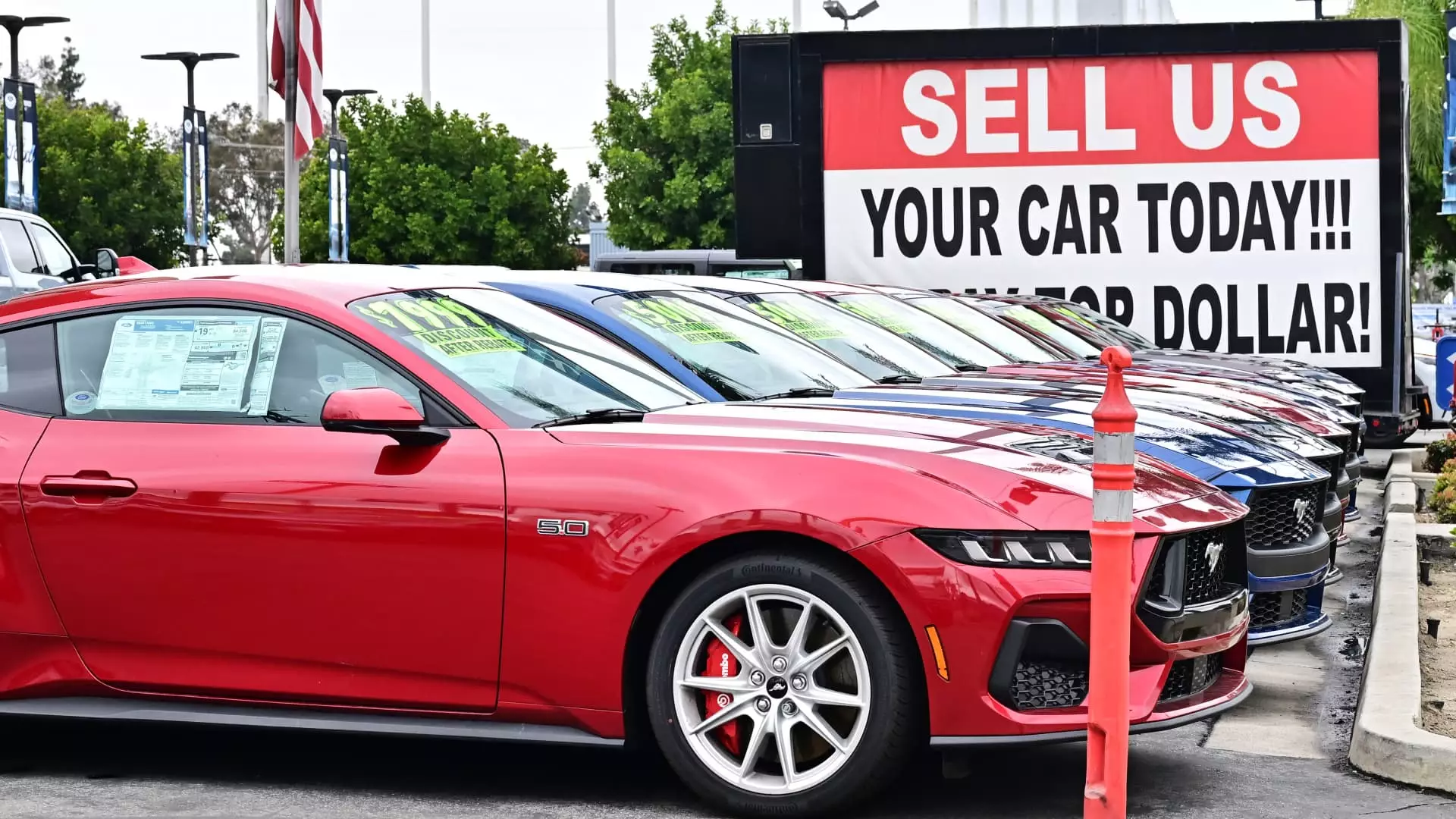In recent months, the used vehicle market has experienced quite a tumultuous journey, resembling a chaotic dance fueled by consumer demand and economic uncertainties. While April witnessed a significant peak in used vehicle prices—reaching levels not seen since October 2023—the latest data indicates a decline of 1.5% from that high. This fluctuation raises several questions about the underlying factors that influence vehicle pricing and consumer behavior.
Nevertheless, the current situation reveals a fascinating paradox: despite the slight decrease, used vehicle prices remain 4% higher than they were a year ago. How is it that we are seeing a price drop combined with an overall increase year-on-year? This situation exposes the intricacies of a market grappling with both demand and supply challenges.
The Economic Backdrop: Tariffs and Consumer Fear
Under the shadow of President Trump’s tariffs, which impose a hefty 25% tax on new imported vehicles and components, consumers have been thrust into a precarious position. Many have flocked to the used car market, fearing that persistently rising new car prices due to these tariffs might push them out of the vehicle purchase arena altogether. Such fear can create a rush to buy, which contributes to demand shocks in the used vehicle market. Jeremy Robb, from Cox Automotive, highlights this historical connection between wholesale and retail markets, suggesting that the pressure from new vehicle prices etches its way into consumer choices, even in the pre-owned sector.
Yet, despite the ongoing economic turbulence, there remains a persistent demand for used vehicles. This demand can be attributed to low inventory levels—approximately 2.2 million used vehicles available in the market. The truth is that many Americans are holding onto their vehicles longer, a trend accelerated by the pandemic and ongoing supply chain issues. Rather than investing in new models, consumers have found creative ways to prolong the lifespan of their existing cars.
A Market in Transition: Stabilization or Continued Struggle?
The most recent data indicates that retail sales of used vehicles dipped 3% compared to April but still show a 4% increase year-on-year. This mixed news points towards a market still in a state of flux. Just as consumers feel the squeeze at the dealership, the broader economic landscape—one wrought by production woes and delayed supply chains—further complicates matters.
Moreover, while experts like Cox Automotive have suggested that used vehicle prices are stabilizing after extensive volatility, it’s essential to question whether we are truly on the verge of a balanced market or merely witnessing an interlude in a longer trend of uncertainty. The hope for consistent price trends is a formidable challenge, especially when consumer attitudes and economic conditions shape the available options.
As we navigate through the complexities of the used vehicle market, it becomes clearer that consumer behavior is as volatile as the prices they are faced with. The current environment underscores a significant shift in how Americans perceive vehicle ownership amid economic challenges. Changes in new vehicle pricing will continue to ripple through to the used market, and it is pivotal for stakeholders to remain vigilant in their assessment of these dynamics.

